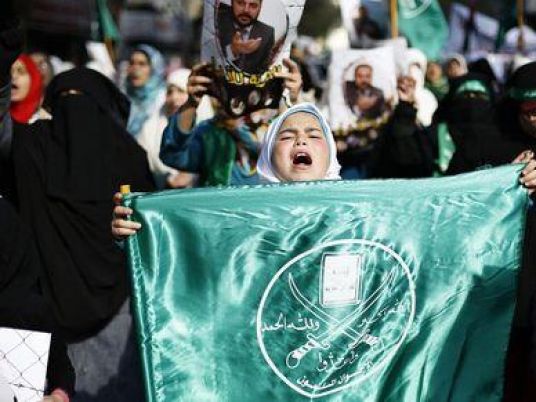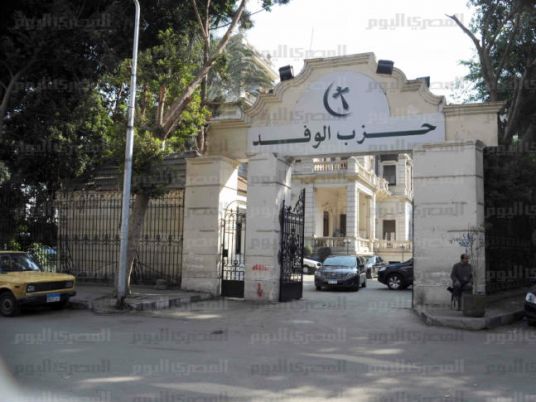
Ahdaf Soueif’s “Cairo: My City, Our Revolution” is an addition to the blossoming genre of “revolution diary” literature. It is also a challenge to the genre, a scuffling of it.
Part of what Soueif does in “Cairo: My City” is take us deep into the center of the 18 days. She does this as not just any diarist: She is an acclaimed novelist, a working journalist and the aunt of prominent activists Alaa Abd El Fattah and Mona Seif, the mother of activist filmmaker Omar Robert Hamilton, and the sister-in-law of Hisham Mubarak Legal Center co-founder Ahmed Seif al-Islam. So while Soueif can often only guess at the thoughts of regime figures, she has lived at one of the centers of the revolutionary movement.
Much of “Cairo: My City” is a chronicle of these experiences: a beautiful, if sometimes hastily detailed, description of her life and the 18 days. But it is also a challenge to the 18-day genre in that it refuses to run chronologically and refuses climax on 11 February. It is a way of charming the forces of darkness by spinning stories within stories, of staving off death.
There is a hunger for 18-day narratives: At the subdued 2012 Cairo International Book Fair, publishers noted that, if anything, readers were on the prowl for new revolution stories. Reading these 18-day diaries is like paging through a family album of some important moment that you’re still chewing over. As you read what Soueif was doing on 28 January, it tugs at the memory of what you were doing on that day. It becomes a composition of her memory and yours, perhaps lifting your memory, adding a new dimension.
“Cairo: My City” derives its considerable charm from the small details of Soueif’s life — a mountain of laundry at the Zamalek flat, visits to her mother’s orchard — but she never intended it as a memoir. The book, Soueif writes in the introduction, is “an intervention, rather than just a record[.]” It’s an attempt to keep the threatened revolution alive.
Everyone, Soueif notes, wants to own the 18 days. A number of forces want to capture this story and define its beginning and its (rapid) end. When Soueif finally stopped writing “Cairo: My City” at the end of October, she could not have known what direction the story would take or who would have control of its shape. But she did know that Egypt’s revolutionaries would have to fight to keep the narrative open-ended.
Soueif begins “Cairo: My Story” where many of the other 18-day journeys begin. It diverges on 1 February, when she interrupts her narrative to throw a story within the story. She hurls us forward to October 2011, and then back to the hot and complicated days of the summer, and then forward, step by step, to Maspero. She does not run her story chronologically. She often harks back to her childhood, or her parents’ childhoods. She inserts October inside February, and the hot summer months inside October.
By doing so, she achieves a complication of the genre. The 18 days is not 18 days: It continues. The messy, hot, wonderful-awful summer and horrible, horrible Maspero violence are enclosed within the 18 days. In her stories within stories, Soueif ranges as far as she possibly can, right out to the end of her tether. Beyond October, she doesn’t know what will happen. She guesses. She knows her speculations might be irrelevant by the time her book leaves the presses of Bloomsbury and Al-Shorouk several months later. But her guesses function as an important device, a way of spinning out the argument. We guess because we are free to guess, because the ending is not yet written.
From here, she returns to the 18 days, our happily-ever-after. It is all the more wonderful to get back to 1 February because, thank God, we know how February will end. It’s a story, and it’s a great story. It’s possibly the best story we’ve ever heard.
The most enjoyable parts of the book are the family moments: Soueif misses her mother, she is worried for her son, she has the flu, she argues with her nephew. But the prose sits beautifully on the tongue through its politics, too. Soueif often picks a wonderful, fresh way to describe something we all saw, as when the vice president makes his 11 February appearance, and, she writes, “Omar Suleiman [was] looking even deader than usual …”
At times, “Cairo: My City” seems to have a little too much happy-gloss. There is a lot of the “face-painting and music and street theatre and a poetry stand” and not as much of the fighting between revolutionaries and vendors, the divisions along class lines that also occurred during the hot summer in the square. But the gloss is part of the project: She holds out what Egypt can be, what we all remember is possible.
In equally charged language, she also holds out what else is possible: “Now the casing’s been smashed and the Darkness is out there, unchannelled, panicked, rampant, twisting into every nook and cranny as it seeks to wrap around us again”. This, then, is what her stories are trying to charm into quietude. This, she says, is our King Shahryar.
Soueif’s project is further complicated because she wrote the book in English for both Egyptian and foreign readers. While the English-language book was published in the UK in late January, the Arabic translation won’t be out from Dar al-Shorouk until next month. And because Soueif intended the story for multiple audiences, her narrative must welcome an outsider but never alienate an insider. She navigates between her audiences with great skill, although ultimately seems more comfortable with the rhetorical devices that welcome the foreign visitor.
“Cairo: My Story” doesn’t end on 11 February. It seems as though it will, but then the book refuses again, inserting an epilogue of testimonies from Alaa, Mona, Omar and Soueif’s niece Sanaa. Each testimony is in a different style, and these add a roughness to the end of the book. But even then the book refuses to end, and Soueif insists we must stay alert, for, “Our story continues …”




